Effects of transcutaneous spinal cord stimulation on the brain


Transcutaneous spinal stimulation (TSS) is a relatively new approach to neuromodulation. We can activate networks in the spinal cord by injecting a small amount of current through the skin, which evokes a response in the muscles (muscle contraction). Depending on the person the electrical stimulus (the zappy time) feels either like a massage or it can be uncomfortable, not exactly painful, just not something you would go out of your way for. But the spinal cord is a two way street, so what does TSS do in the brain?
(more…)The plastic spinal cord
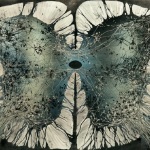

You can’t teach an old spinal cord new tricks, or something like that. Up until recently (like the last ten or fifteen years), we had thought that the spinal cord was a fixed thing. It was the information highway of the body and its primary role was to receive, sort, and send information from the brain to the body and vice versa. That’s (thankfully) not the case. The truth, or at least something closer to the truth, is that the spinal cord is a lot like the brain. It can learn, think, and even act independently of the brain.
(more…)The complexity of biology


Why couldn’t things be simple? Maybe you would take a measurement and have the correct value every time. Or you would perform an experiment and get the same result no matter what. The human body is an amazing feat of engineering by evolution. It’s layer upon layer of stuff that all work together to do the thing that needs to happen. The fact that it works at all is amazing, it’s like throwing a bunch of computers into a room, shaking it, and out comes a fully working robot that’s more advanced than anything you’ve seen.
(more…)When you don’t want to say no


In undergrad I had a discussion with my advisor, or rather he was more of a mentor, he wasn’t technically an advisor. It went something like this, I don’t know what to do next because it all seems so interesting. He argued that it was a good problem to have and while I have generally narrowed down my focus (I am doing a PhD after all), I still have an issue with focusing my excitement. It’s like being at Disneyland and trying to force yourself to go on just a single ride your entire trip. I don’t wanna, I want all the knowledge!
(more…)The science behind an MRI


Today I had an MRI, don’t worry it was for research purposes. It wasn’t a short MRI either, I was in the bore for almost two hours. Yep, stuck in a tube with nothing but my thoughts, some music, and the sounds of the MRI machine doing its thing. I figure we can discuss what an MRI is, why I had one, and why I don’t mind that it took so long. I may even show off some of the scans, but not today I don’t have them yet.
(more…)Day 362: Experiment two

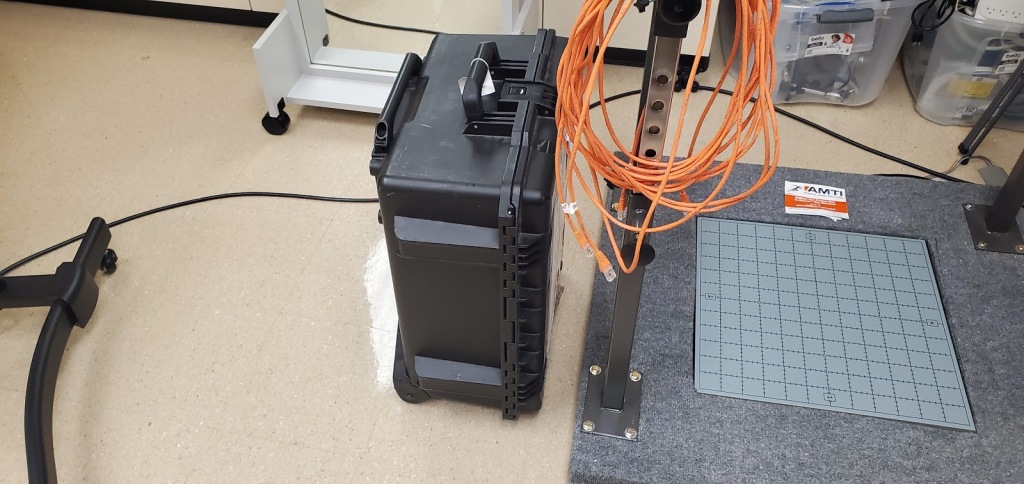
Well today is going to be a quick recap of my experiment yesterday. This will be just as much for me as it is for all of you. While I can’t go into the experiment details (since I’m working to publish this) I can give a pretty good overview like I did the last time around.
(more…)Day 361: Accidental history


Ever wake up one morning and realize you’re exactly where you wanted to be. That you’re in a place you never even dared to dream you could reach because, well it was silly to think you could accomplish something like that. Dreams that big weren’t meant for people like you, so you didn’t even bother to think you could get there. Yet… here we are.
(more…)Day 360: Second experiment


The computer I use to process all my data, even with this it takes FOREVER to finish processing.
Well tomorrow is my second experiment. To be clear, it’s technically the same experiment, just a second person, so maybe it would be better to call it trial two? In any case, while the last one went (mostly) well, there are a few things I’m changing to make this next one even better. Sometimes when you prep for an experiment, you don’t realize what you’re forgetting until you can’t do it, so we’re correcting that this time.
Day 359: Car problems
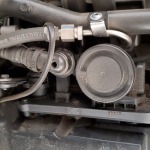

Thought it was the PCV valve, but nope…
Well if things weren’t bad enough as it is with my own little world, we get to add car troubles to the list. Dealing with issues like this during normal times isn’t so bad, besides the bill that is, but this isn’t normal times. Nope, we’re dealing with a pandemic, school is about to start, and to top it off, I firmly do not have the money to fix the damn car, what’s a guy to do?
Day 358: One small step


Sometimes are points in life that you can clearly define as the before and the after. As a child sometimes those points are simple milestones growing up, starting a new school for example or moving to a new town. There is the before and the after. As you get older those points become few and far between. For example, you started a new job. Unless it’s your dream job, you don’t really think of it as one of these points and everything just blurs together. Thus the bar seems to get higher and higher as we age. Today I had one of those points.
Day 357: Thoughts from the lab


My giant very suspicious case full of equipment from my school lab.
Well today is a busy day! I’ve got a lot going on so hopefully by the time you read this I’ll have all the setup taken care of. Working in two labs seems like a fun and interesting way to do experiments and it is! It’s also a huge pain.
Day 353: Experimental prep


Sometimes a parfor loop in just doesn’t cut it because the things you want to do in that loop aren’t allowed (like save or load data a certain way). In those cases (see above) I can run multiple instances of MATLAB and process my data much more efficiently than if I did it one at a time. In this case I had 8 subjects that needed a rather long mathematical operation performed, so I did it all at the same time. It’s a little silly, but it worked! If you didn’t know you could do that, now you do!
Yesterday I told the story of how we got to this point, a long two year journey and next week I finally get to take the next step. It’s exciting, but it also means because of my flare-up, I’m behind on what I need to do to be ready. Not to worry though, I’m taking it slow so I don’t make whatever I have worse. What goes into an experiment like this? I’m glad you asked!
Day 352: My experiment is coming!!

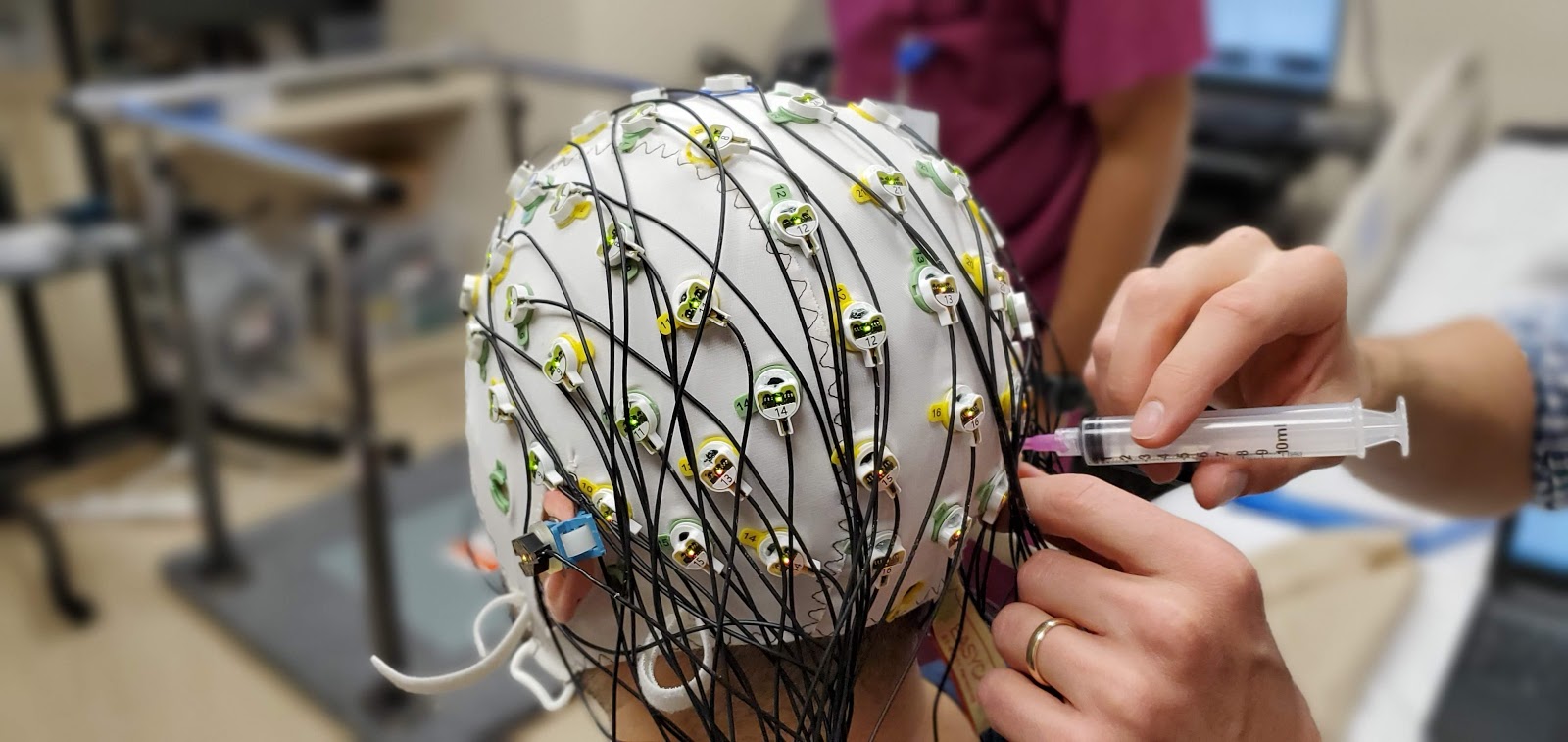
I just really like how this photo came out. Here’s one of my lab mates gelling the electrodes for a pseudo-experiment. The scary looking syringe has a blunt tipped needle, we don’t break the skin in our lab so no pain, just a bit of gel to wash out of the hair once completed.
Okay I’ve got an experiment update today and I’m really excited to share because it feels real finally. I know I already wrote about some of this, but when I reread my previous post, it felt disjointed so let’s go over how we got here and what’s coming. I’m excited, are you excited? I’m excited!
Day 350: In construction…
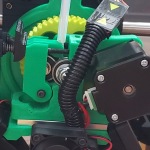
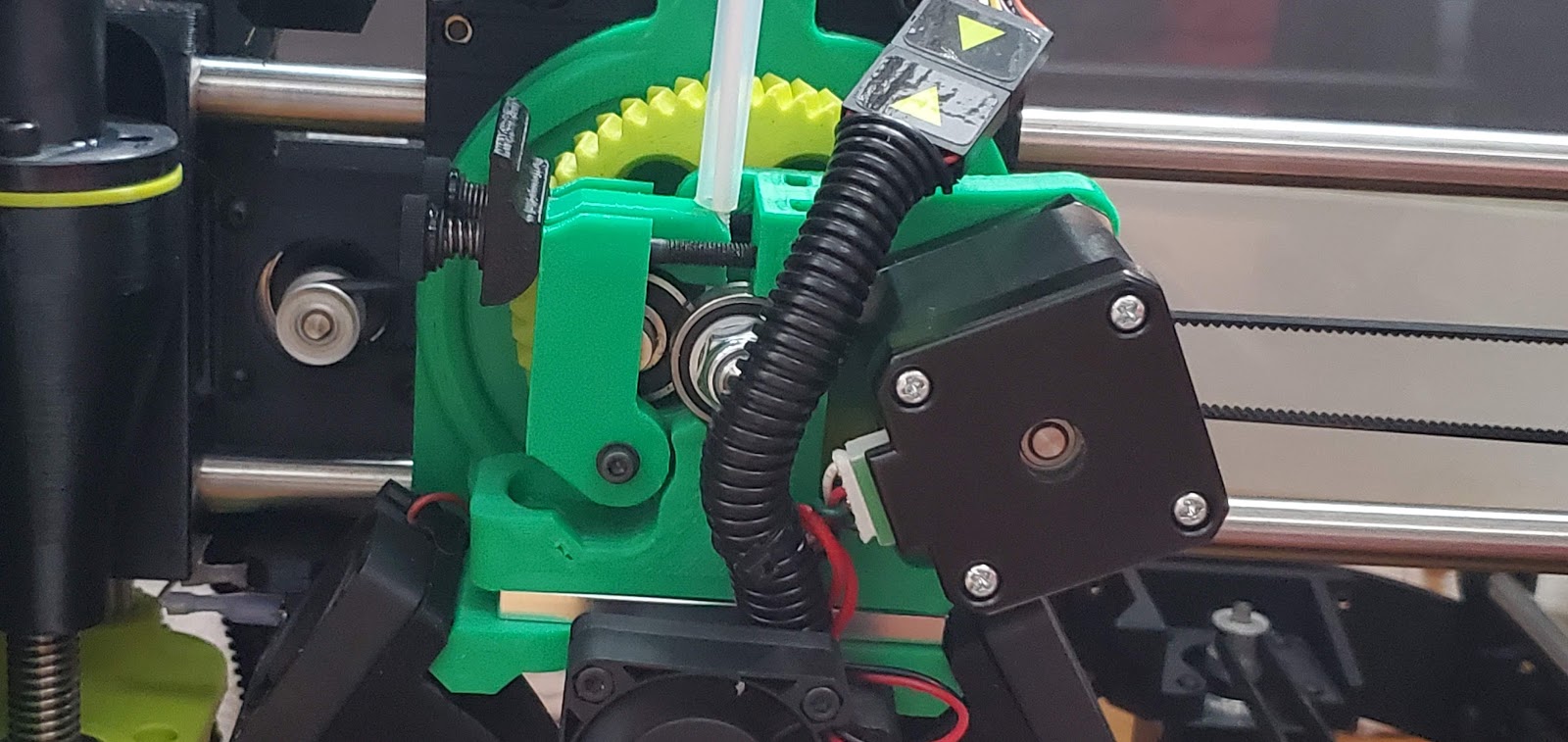
I redesigned my extruder to make it beefier, this has nothing to do with the post, but I’m really proud of it and wanted to share. Haha
Well today despite feeling like refried dog poop I have to go do experiments. It’s part of the job and to be honest I want to do it even though I feel like dried monkey vomit. I could go on, but you get the picture. I do have some more good news not related to yesterday’s news. So that is the conversation for the day.
Day 326: Review: The state of spinal cord research
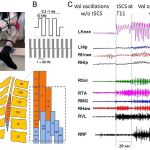

Facilitation of stepping-like volitional oscillations using non-invasive transcutaneous electrical spinal cord stimulation in SCI subject. (A) Position of the participant in the gravity-neutral apparatus. (B) Biphasic electrical stimulation was delivered using unique waveforms consisting of 0.3–1.0 ms bursts filled by 10 kHz frequency that were administered at 5–40 Hz. (C) EMG activity of right soleus (RSol), right tibialis anterior (RTA), right medial gastrocnemius (RMG), right hamstrings (RHam), right vastus lateralis (RVL), right rectus femoris (RRF) and angular displacement in the knee and hip joints of both legs during leg oscillations with a voluntary effort alone (Vol), stimulation at T11 (Stim), and Vol + Stim are shown. (D) Schematics demonstrating the approximate location of transcutaneous electrodes above the lumbosacral enlargement, in relation to the location of the motor pools based on Kendall et al. (1993) and Sharrard (1964).
Well it’s been two weeks (roughly) and my PI asked specifically that this week I do a review on the state of spinal cord research, with emphasis on the spinal cord stimulation work I’m doing. So this review is going to look slightly different, namely it has a rather long references section (15 total). If you find this research fascinating I recommend “And yet it moves” (reference 5). It’s long, but open access and worth the read. I’m a little bias though, my Co-PI is one of the authors. In any case, I had two weeks to write this, so hopefully it is a good dip into what we know about the spinal cord and a lot of what we don’t. Enjoy!
Day 310: Review – Interfacing with alpha motor neurons in spinal cord injury patients


Spatiotemporal spinal maps of ipsilateral a-MNs. (A) Experimental set-up for ankle plantar flexion. (B) HD-EMG is decomposed into a-MN spike trains using a convolutive blind-source separation technique. (C) The spinal output to generate the neural drive to muscles is estimated from the a-MN spike trains.
The world is on fire, we’re protesting for a future, but today I have my review paper due so instead of writing about my frustrations I’m going to share my review. Today we’re looking at the effects of trans-spinal direct current stimulation (tsDCS) on alpha motor neurons and how we can determine that effect using electromyography. It’s actually a very cool paper, the work is well done, and it’s open source so you can read it if you’re interested.
Day 296: Review – Spinal Rhythm Generation by Step-Induced Feedback and Transcutaneous Posterior Root Stimulation in Complete Spinal Cord–Injured Individuals


Transcutaneous posterior root stimulation: Paravertebral and abdominal skin electrode placement (this is just a portion of figure 1 of this paper.
Normally I’m somewhat excited to post these, but with everything going on you’ll have to pardon my lack of joy. However, it’s been two weeks so I need to review another paper so I’m sharing it here as well as sending my PI a copy. The study is a few years old, but it’s open access so you can read it if you’re interested. Transcutaneous spinal cord stimulation (TSS) is one part of my research in case you couldn’t tell from all the spinal cord and TSS studies and posts. I find it interesting and it gives me hope that we can help a whole lot of people living with spinal cord injury. Anyway give it a read and get out there and protest for a better world.
Day 225: Class presentations


For the past week we have been utilizing online resources so that classes can continue while we are all social distancing. While this is means that we mostly use Zoom, we also have message boards and other resources that we can use. However, these resources are sometimes a poor substitute for in person classes. This is especially apparent when we have certain assignments for the class, such as a group presentation.
Know your spinal cord – The Recap


It’s day fifty-four and we’ve hit the end of our journey for this mini-series. For one last time, you can find all our posts in the neuroanatomy category. Everything comes to an end eventually and today I think we should do a small wrap up. This isn’t just a repeat of everything we went over though, we’re going to attempt to tie a lot of the topics together. So let’s give this a shot.
Know your spinal cord – Translating neural signals


Here we are on day fifty-three, we are nearing the end for sure. I was going to end the series today, but there is at least one more thing that I think will be interesting to cover. As always, you can find all of our posts in the neuroanatomy category, after all there are quite a few now. Today we are going to talk about how the brain and muscles use different signals to communicate. Basically, they speak different languages; let’s talk about what that means.
Know your spinal cord – Transcutaneous spinal direct current stimulation


E amplitude distribution over the spinal cord and nerve surface. The color scale on the right is normalized with respect to the maximum of E amplitude in the spinal cord.
Well after our short break yesterday with my biweekly review paper, it’s back to the know your spinal cord series and we’re on day fifty-two! If you’re here for the first time, you can find the posts in this mini-series in the neuroanatomy category. We’ve taken a few twists and turns since we’ve started the series, but we’ve covered way more than I originally planned. We’ve covered how transcutaneous spinal cord stimulation is thought to work, that post focused on the type of spinal cord stimulation I’m researching. However, there are other ways to stimulate the cord. Transcutaneous spinal direct current stimulation (tsDCS) is a different way to stimulate and today we will talk about the difference.
Know your spinal cord – Microglia


We cover this in the post, but it’s so cool I had to use it for the featured image.
It’s day fifty-one of knowing your spinal cord! For those of you who just found us, fear not we have all these posts in reverse chronological order listed in our neuroanatomy category. For everyone else, lately we’ve been talking about glial cells. This came about from the post on glial scarring which made me realize we should probably define glia. There are four types of glial cells found in the spinal cord (that we know of) we’ve covered three of them already and today we are talking about the last kind, the microglia.
Know your spinal cord – Ependymocytes


Ependymal cells, which create cerebral spinal fluid (CSF), line the ventricles of the brain and central canal of the spinal cord. These cells are cuboidal to columnar and have cilia and microvilli on their surfaces to circulate and absorb CSF.
We made it to yet another milestone, day fifty in our know your spinal cord series! As usual, you can find each and every one of these posts neatly organized in reverse chronological order using our neuroanatomy category. For the past couple of posts, we’ve introduced the types of glial cells, probably a bit poorly, but they are just so complex we can only really focus on a few of the functions. Needless to say they are very important cells. Today we are talking about the third (of four) types of glial cells found in the spinal cord (and brain), that is the ependymocyte. Let’s take a look.
Know your spinal cord – Astrocytes


SNL induces MCP-1 upregulation in spinal cord astrocytes (A–C)MCP-1 expression in the spinal cord of naïve animals (A) and SNL animals at 3 days (B) and 10 days (C). Scale bar, 200 μm. (D–F) High magnification images of (A–C), indicated in the white boxes of A–C, show the dorsal horn of the ipsilateral spinal cord. Scale bar, 100 μm. (G–I) Double staining shows that MCP-1 is colocalized with GFAP, a marker for astrocytes (G), but not with NeuN, a marker for neurons (H) or OX42, marker for microglia (I). Scale bar, 50 μm. DOI: 10.1523/JNEUROSCI.3623-08.2009
Day forty-nine in the spinal cord series! You can find all the posts in this series in our super useful neuroanatomy category. A couple of posts back we introduced glial scarring, one of the problems we need to overcome to help people with spinal cord injuries. That led to the realization that we needed to introduce the glial cells, so yesterday we covered the oligodendrocytes and today we are talking about the astrocyte. Now that we have some background of how we got here, let’s introduce today’s topic.
Know your spinal cord – Oligodendrocytes


We made it to day forty-eight! As always, the neuroanatomy category will help you find each and every post in the spinal cord series. It’s all really good stuff! We mentioned yesterday that this was coming, we’re going to do a quick breakdown of the types of glial cells just to make understanding the glial scarring post easier. Plus it helps to understand the functions of glial cells in general when we talk about things that could go wrong. With that, let’s get into oligodendrocytes!
Know your spinal cord – Glial scarring


Previously injured nerve fibers (red) are shown regrowing through a dense astrocyte scar (green). UCLA research shows that astrocyte scars actually help support nerve fiber regeneration. You can read more about the study from UCLA here.
Here we are at day forty-seven of spinal cord posts. We are definitely wrapping up our series sad to say, maybe we can get to day fifty, that would be a nice round number to stop at. For those of you who want to read all the other posts, the neuroanatomy category has everything in reverse chronological order and will teach you everything from the medullary pyramids, the cauda equina, and all the stuff in between. Today we are talking about glial scarring and why it’s such a problem a topic I realized we should touch on after talking about the problems with invasive spinal stimulation methods yesterday.
Know your spinal cord – Invasive spinal stimulation techniques


It’s day forty-six in our spinal cord series. While we’re nearing the end (maybe), there are still a few things to cover. First, if you’re new, you can find all of the posts in the neuroanatomy category for when you need a quick spinal cord fix. I’ve been debating about this post for some time, but I figure we might as well cover it since we’re here. Today we are going to talk briefly about invasive spinal stimulation and what the future might hold.
Know your spinal cord – Compound action potentials

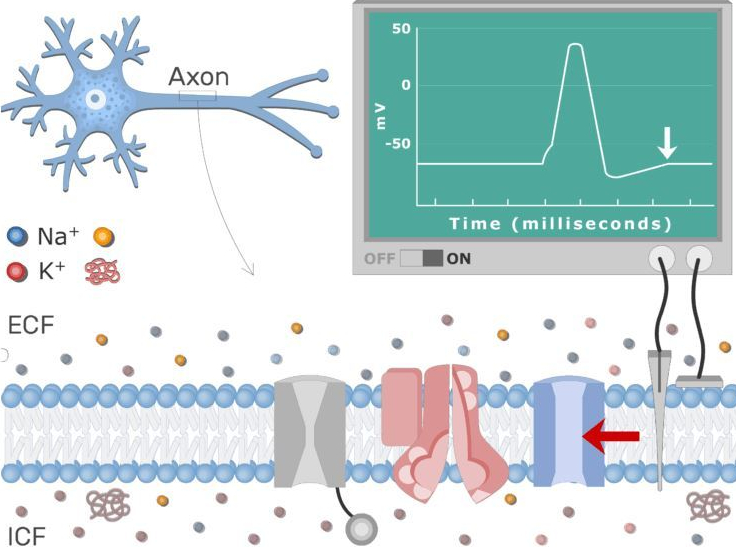
Image from: Get body smart
Day forty-five of the know your spinal cord series is here! With so many posts, you may be wondering how to find them all. Fear not, we have a super helpful neuroanatomy category for all your spinal cord needs. For the past few posts we’ve looked at some very interesting tools to probe the spinal cord. We’ve seen that there are quite a few ways we can go about it, but more importantly they all tell us something slightly different. Today we are looking at the product of that stimulation, the compound action potential.
Know your spinal cord – Transcutaneous Spinal Stimulation


Welcome to day forty-four in the know your spinal cord series! As usual all of our posts are in a super easy to find neuroanatomy category. Now that we’ve covered our into into diagnostic tools to probe the spinal cord, let’s look at some of the ways we are working to help treat spinal cord injuries. Today we’re looking at a heavy hitter so to speak and something my research is focused on, transcutaneous spinal stimulation (TSS). Let’s take a look!
Know your spinal cord – The V-wave


We’ve made it to day forty-three of our know your spinal cord series! While that is a lot of posts, we’ve made it super simple for you to find all of them with our neuroanatomy category. Lately, we’ve looked at several different tools in our spinal cord probing toolbox. We’ve seen all sorts of different ways to create a response, but we are still missing one important tool for our exploration into the unknown spinal cord world and that is what we are going to talk about today!
Know your spinal cord – Somatosensory evoked potentials

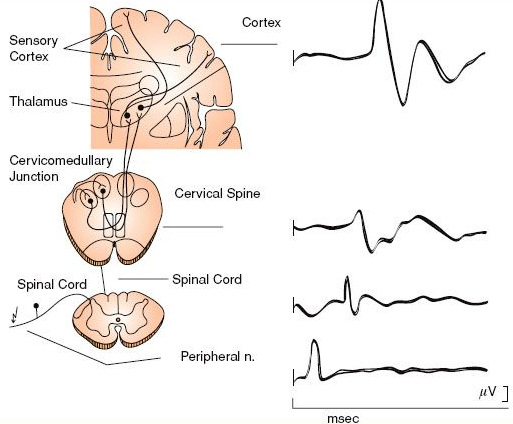
Somatosensory evoked potentials travel from peripheral nerves to the brain and we can record the response along the spinal cord and the brain non-invasively.
We’re back again with day forty-two of spinal cord knowledge series and day 200 in our 365 days of academia series! A friendly reminder that you can find each and every one of these posts in our very helpful neuroanatomy category. Yesterday we looked at motor evoked potentials, or electrical pulses that we create which travel from the brain to the muscles. Today we are looking at the almost reverse, signals we create originating in the peripheral nerves and arriving at the somatosensory cortex of the brain.
Know your spinal cord – Motor evoked potentials


Transcutaneous magnetic stimulation (left) stimulating a portion of the motor cortex, which travels down the spine and activates a muscle (right)
Day forty-one in the know your spinal cord series. While the number of posts is going up, we made them easy to find by using our awesome neuroanatomy category! Maybe we did this a bit backwards, but it’s our series and this was the order we did it in. Yesterday we covered cervicomedullary motor evoked potentials, which is a subset of what we will be covering today. So again, slightly out of order, but hey let’s look at motor evoked potentials.
Know your spinal cord – Cervicomedullary motor evoked potentials


We made it, day forty in the know your spinal cord series! I honestly didn’t think we would get this far into things, but here we are. As per usual, if you’re new you can find all of the posts in this series in our super helpful neuroanatomy category! For the rest of you, or the ones interested in this topic, today we are looking at yet another tool in uncovering the secrets of the spinal cord.
Know your spinal cord – The F-wave


It’s day thirty-nine of our know your spinal cord series and we’re only touching the surface (so to speak)! If you’re just joining us, then welcome! You can find all of our spinal cord knowledge in the handy neuroanatomy category. Well as these things typically happen, yesterday brought up an interesting gap in our knowledge base. While I introduced the H-reflex, we never talked about the F-wave! So of course yesterday’s post probably left some of you scratching your head as to what an F-wave even is, fear not we’re going to clear that up today!
Know your spinal cord – The spinotectal tract


Welcome to day thirty-eight in the know your spinal cord series. As always, you can find the entire know your spinal cord series exclusively listed under our neuroanatomy category. We’ve amassed quite a bit of spinal information and I’ve gotten into more detail than I originally planned, which is part of the reason why we are going back and covering some of the things we skipped over. Today is one of those topics, we will be talking about the spinotectal tract, not to be confused with the tectospinal tract, which we already covered.
Know your spinal cord – The spinoreticular tract


We’ve arrived at day thirty-seven in the spinal cord series and we’re still covering new ground. You can find all of our sweet spinal cord action in the neuroanatomy category, which at this point is pretty extensive for a high-level look. Yesterday we talked about the reticulospinal tracts so today we are talking about the sister tract, the spinoreticular tract. Are they related, or is it all just in the name?
Know your spinal cord – The reticulospinal tracts


Reconstruction of the nuclear masses of the brain stem
It’s day thirty-six in our spinal cord series and I yesterday I lied, we’re not done quite yet. First, as always we have a super helpful neuroanatomy category for anyone wanting to read the posts from this series. For the rest of us, today we’re talking about the reticulospinal tracts, yes tracts with an s. There is a good reason for this, but you’ll have to read on to see why. (more…)
Know your spinal cord – The Tectospinal tract


Welcome to day thirty-five in the know your spinal cord series! For the new people, we have a whole neuroanatomy category dedicated to these posts! For everyone else (or those of you just interested in today’s topic, this is going to be on another smaller tract of the spinal cord we haven’t covered yet. Today we are talking about the tectospinal tract, not to be confused with the spinotectal tract, so let’s get started.
Know your spinal cord – The Vestibulospinal tract


No, we’re not moving away from the spine, but we are talking about the cranial nerves.
It’s day thirty-four in our spinal cord series. As usual, if you’re new here welcome and you can find each and every post in our series in the handy neuroanatomy category! All the posts are in reverse chronological order and while we don’t technically have a specific order, you should probably start with the medullary pyramids and work your way forward. If you’re here, then you probably are interested in the vestibulospinal tract, something we haven’t covered yet, but fear not, we are going to do that now.
Know your spinal cord – The landmarks


A human cervical spinal cord slice. Once you’ve read this post, you should be able to identify the major parts and tell which side is the front of the cord.
Welcome to day thirty-three in our series. For those of you who are just finding us, we have every one of these posts in our neuroanatomy category in reverse chronological order. Today we’re going to backtract (get it?) a little and go over something basic, but something we’ve skipped over to this point. We never really talked about the landmarks of a spinal cord slice. So today, we are going to take a detour and go over spinal cord features.
Know your spinal cord – The Ramus

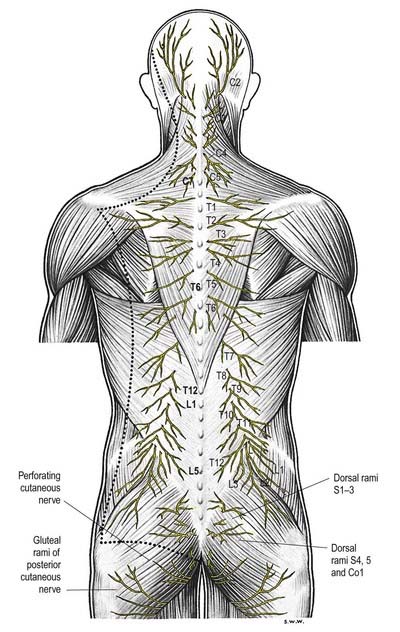
Today is day thirty-two in our know your spinal cord series. If you’re just joining in, as I usually do in the intro, we have a whole neuroanatomy category just for these posts so you don’t have to dig for them! Today we are covering a couple of structures that fall under the same broad category, ramus. What are they and what do they have to do with the spinal cord? Well that’s what we’re about to find out!
Know your spinal cord – The spinal nerves (revisited)


Here we are at day thirty one of knowing your spinal cord and we’re still going strong. I’m very happy that I cataloged all of these posts in the super handy neuroanatomy category, which should make it easy for you to find each and every one of them! Today we’re talking about something we’ve touched on in the past, but deserves its own post, the spinal nerves. We need to cover this for the next couple of posts, where things get a little… odd. So let’s get started!
Know your spinal cord – The anterior white commissure


Cross section through human spinal cord (lumbar region, L1) showing motor neurons. Astrocytes and oligodendrocytes are labeled ‘A’ and ‘O’, respectively. The objective magnification used is 40x.
Welcome to day thirty of knowing your spinal cord. I feel like that is a lot of spinal cord knowledge for just covering the basics. In any case, if you’re just finding us, welcome! I’ve created a whole new neuroanatomy category just for these posts so you can find them easy and they are in reverse chronological order. Is the anterior white commissure a tract of the spinal cord? Well not really, but it does have an important job and we keep referencing it, so let’s talk about what it does exactly.
Know your spinal cord – The spino-olivary tract

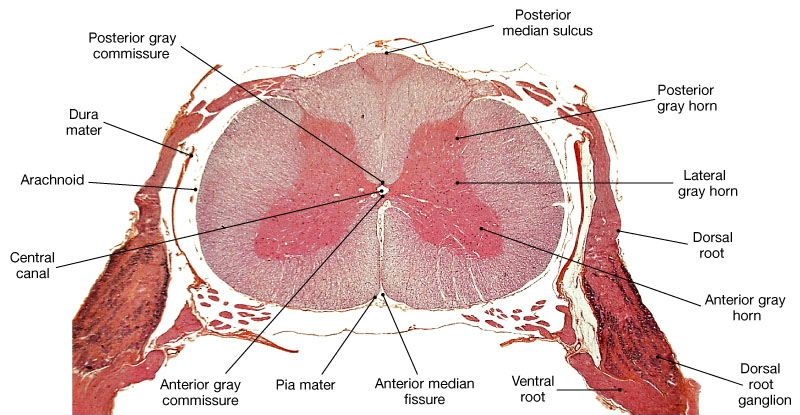
Spinal cord anatomy
Day twenty-nine, wow does time fly! We have over four weeks worth of fun spinal knowledge for you to tap into, all in reverse chronological order in our handy neuroanatomy category! If you read the title, you know we’re back on tract (see what I did there?). Today we’re talking the spino-olivary tract, or is it the olivospinal tract? Keep reading to find out!
Know your spinal cord – Cauda equina syndrome


Here we are on day twenty-eight of knowing your spinal cord. A friendly reminder, the entire series has its own neuroanatomy category where you can catch up on any posts you missed or if you just want a reminder on something we already covered. We’ve already covered quite a bit of spinal disorders, but there is one more that I want to talk about and like our series where we started at the top of the cord and worked our way down, we are now going to cover damage to the bottom of the cord, specifically the cauda equina.
Know your spinal cord – Motor neuron disease


Kultschitzky staining was used here and shows marked symmetrical demyelination (whitening regions) in the anteriolateral roots (especially pyramidal tract) of the spinal cord
It’s day twenty-six already! For those of you who are just finding us, you can find all of the posts in our super cool neuroanatomy category. We’ve already covered a lot of spinal disorders, but one of the larger diseases that we have yet to cover is motor neuron disease. Technically a family of diseases, we will look at the commonalities and causes, so with that introduction, let’s get going.
Know your spinal cord – The H-reflex


We measure the H-reflex by applying an electrical stimulus (S) behind the knee, the ground (G) gets placed around the soleus and the recording electrode (R) is placed inline below, this is the route the nerve takes.
Yesterday we had a bit of a break so I could share a critical review paper. That means this is day twenty-five of the know your spinal cord series! We’ve also hit the halfway mark in our 365 days of academia challenge! If you’re new here, you can find all of the fun spinal cord knowledge we’ve amassed by checking out our neuroanatomy category! We are going to take a step away from spinal cord disorders to talk about something we kind of covered, but deserves a more in-depth exploration. This is all you wanted to know about the H-reflex, so let’s dive in.
Know your spinal cord – Tabes dorsalis


We’ve made it to day twenty-four of fun spinal cord knowledge! If you’re just joining us, we have a whole new neuroanatomy category for you to find all the posts in this series in reverse chronological order. If you want to know everything, then you’ll want to start at the beginning with the medullary pyramids. Over the past week in our series we’ve been talking about spinal cord disorders and today we are looking at something called tabes dorsalis, let’s begin!
Know your spinal cord – Lichtheim’s disease


MRI showing Lichtheim’s disease caused from nitrous oxide (we show another case below)
It’s day twenty-three in our little series called know your spinal cord. For those just finding us, you can read the rest of the posts in our special neuroanatomy category created just for these posts! If I’ve counted correctly, this will be the seventh post on different spinal cord disorders and today we are covering something called Lichtheim’s disease, so let’s take a look.
Know your spinal cord – Central cord syndrome


Welcome to day twenty two in the knowing your spinal cord series! As per my usual intro, you can find the rest of the series in reverse chronological order under our spiffy new neuroanatomy category. Today we are covering another type of spinal cord injury, like the last two posts, this will cover what happens when a certain area (central area) of the cord is damaged. With that, let’s talk spinal cord.


